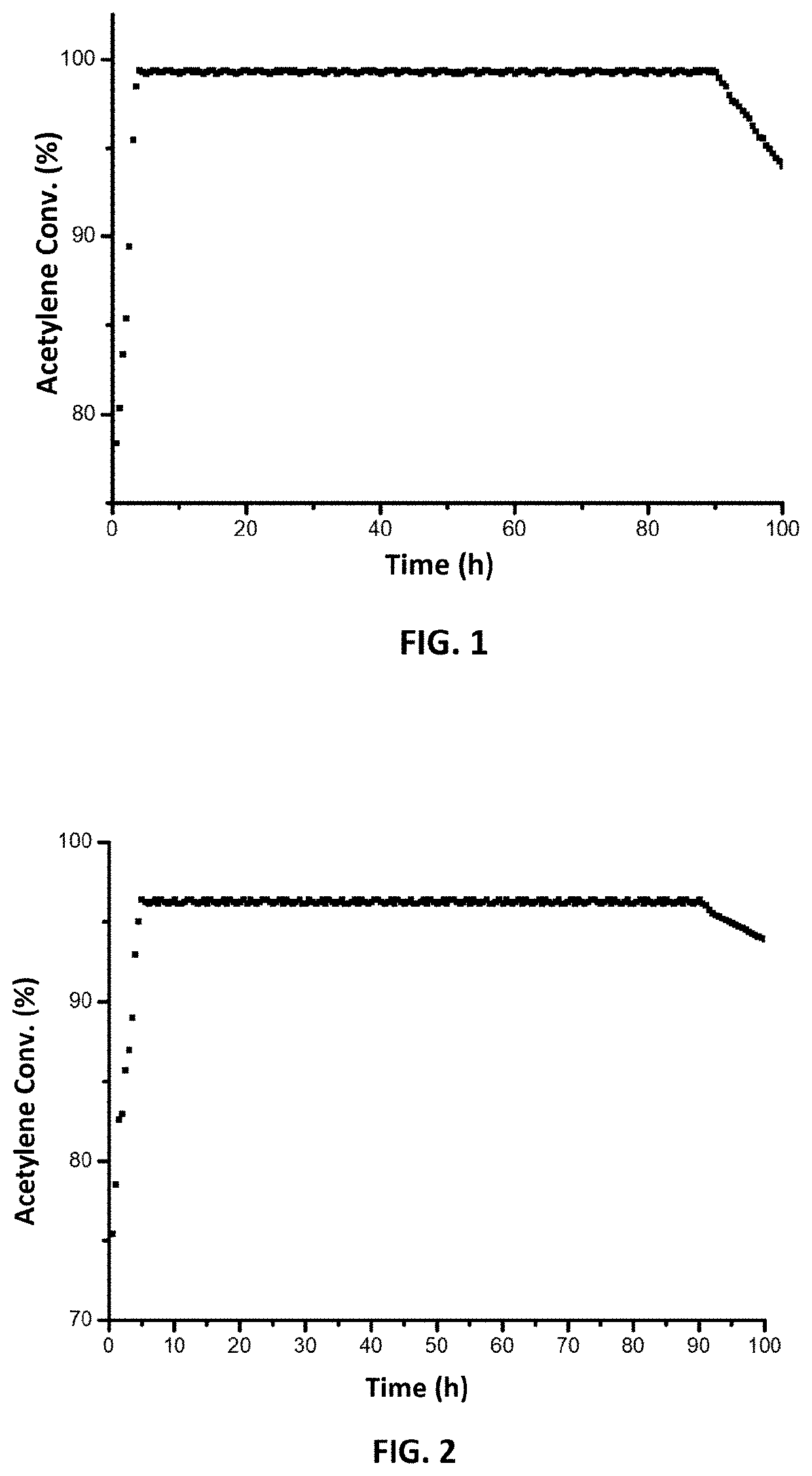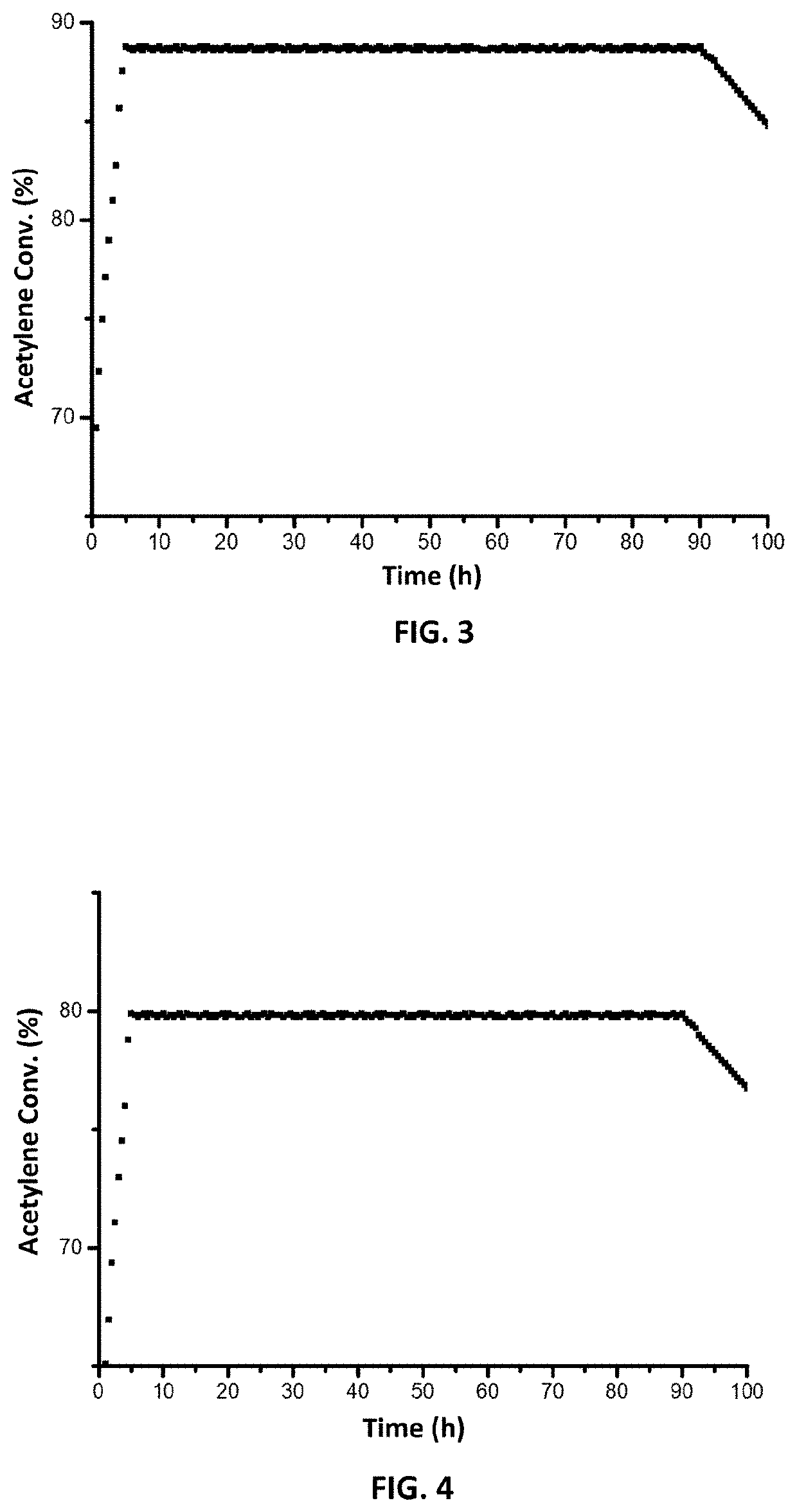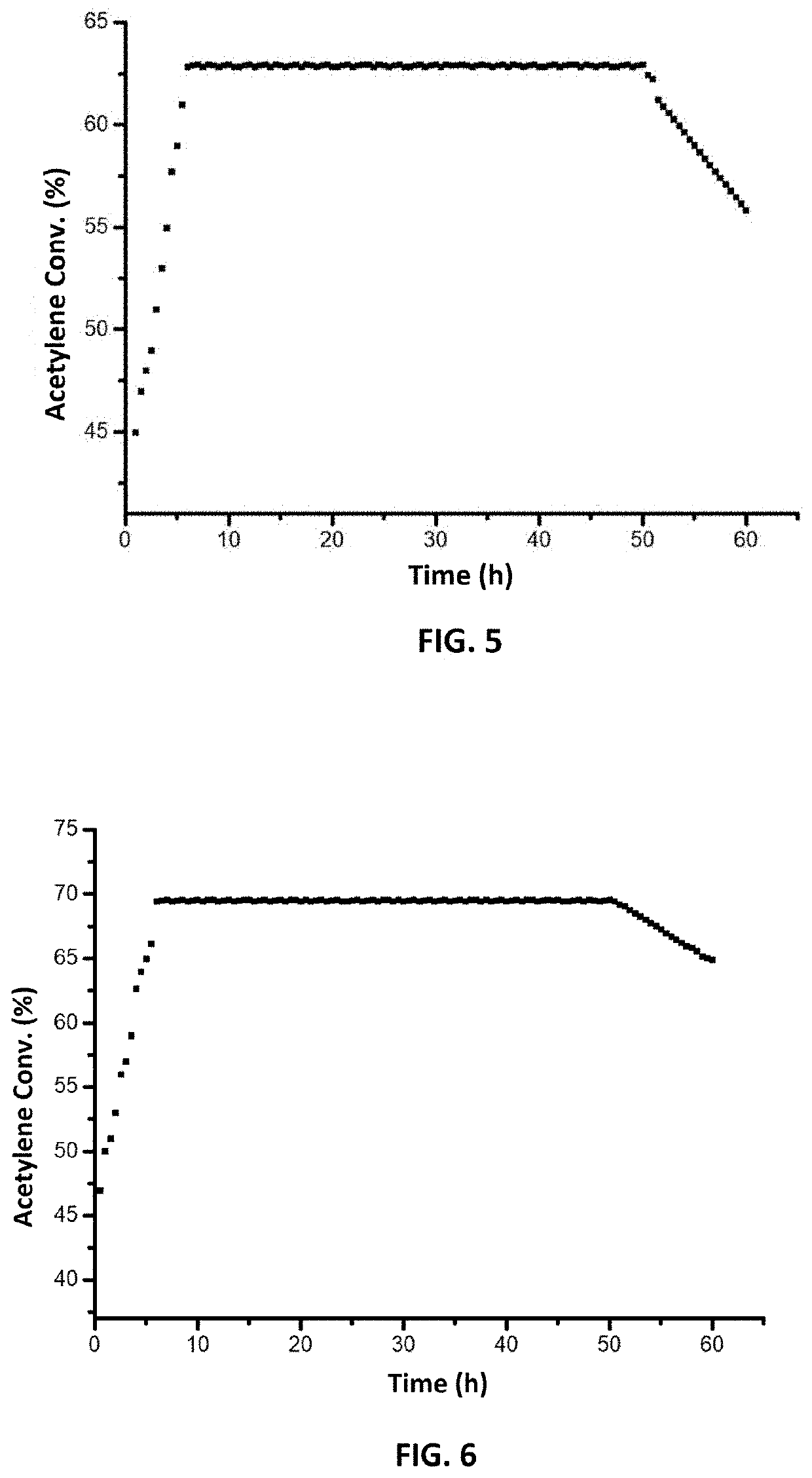Process for preparing catalyst for selective hydrogenation of acetylene to ethylene
a technology of acetylene and catalyst, which is applied in the field of selective hydrogenation of acetylene to ethylene, can solve the problems of reducing the quality of polyethylene products, adversely affecting the subsequent polymerization reaction of ethylene, and the catalyst cannot allow prompt desorption of the formed ethylene product, etc., to achieve the effect of reducing the ethylene adsorption ability, high catalytic performance and high stability
- Summary
- Abstract
- Description
- Claims
- Application Information
AI Technical Summary
Benefits of technology
Problems solved by technology
Method used
Image
Examples
example 1
[0056](1) Preparation of chloropalladic acid, gallium chloride acid, and chloroauric acid solutions a. 1 g of PdCl2 was dissolved in concentrated hydrochloric acid and transferred into a 100 mL volumetric flask, and then diluted to volume using deionized water so as to form the chloropalladic acid solution at a concentration of 10 mg / mL;
[0057]b. 1 g of GaCl3 was dissolved in concentrated hydrochloric acid and transferred into a 100 mL volumetric flask, and then diluted to volume using deionized water so as to form the gallium chloride acid solution at a concentration of 10 mg / mL;
[0058]c. 1 g of chloroauric acid was dissolved in deionized water and transferred into a 100 mL volumetric flask, and then diluted to volume using deionized water so as to form the chloroauric acid solution at a concentration of 10 mg / mL.
[0059](2) Preparation of catalyst for selective hydrogenation of acetylene to ethylene d. using a 1 mL pipetting gun, 0.835 mL of the above prepared chloropalladic acid solu...
reaction example 1
[0062]The catalyst prepared in example 1 was used in performing the selective hydrogenation of acetylene to ethylene.
[0063]A mixed gas containing acetylene, hydrogen, and ethylene with a molar ratio of 1:2:100 was introduced into a fixed bed reactor charged with the catalyst under a gas hourly space velocity of 2400 h−1 to perform an addition reaction of hydrogen gas to acetylene at 70° C. under 0.05 MPa to give the ethylene product, the results thereof being given in table 1.
[0064]FIG. 1 is a graphic illustration of acetylene conversion over time in the reaction described in reaction example 1. As can be seen from FIG. 1, the acetylene conversion can be up to 99.4% and the catalytic performance of the catalyst can be maintained for around 90 hours.
[0065]FIG. 7 is a TEM image of the catalyst prepared in example 1. As can be seen from FIG. 7, the catalyst particles have an uniform and small particle size.
example 2
[0066]A catalyst was prepared in substantially the same manner as in example 1, except that 0.91 mL of the chloropalladic acid solution, 2.52 mL of the gallium chloride acid solution, and 0.42 mL of the chloroauric acid solution were mixed with 6.15 mL of deionized water, wherein a mass ratio of the palladium element in the chloropalladic acid solution:the gallium element in the gallium chloride acid solution:the gold element in the chloroauric acid solution:the silica was 0.39:0.83:0.24:100.
PUM
| Property | Measurement | Unit |
|---|---|---|
| temperature | aaaaa | aaaaa |
| temperature | aaaaa | aaaaa |
| volume | aaaaa | aaaaa |
Abstract
Description
Claims
Application Information
 Login to View More
Login to View More - R&D
- Intellectual Property
- Life Sciences
- Materials
- Tech Scout
- Unparalleled Data Quality
- Higher Quality Content
- 60% Fewer Hallucinations
Browse by: Latest US Patents, China's latest patents, Technical Efficacy Thesaurus, Application Domain, Technology Topic, Popular Technical Reports.
© 2025 PatSnap. All rights reserved.Legal|Privacy policy|Modern Slavery Act Transparency Statement|Sitemap|About US| Contact US: help@patsnap.com



